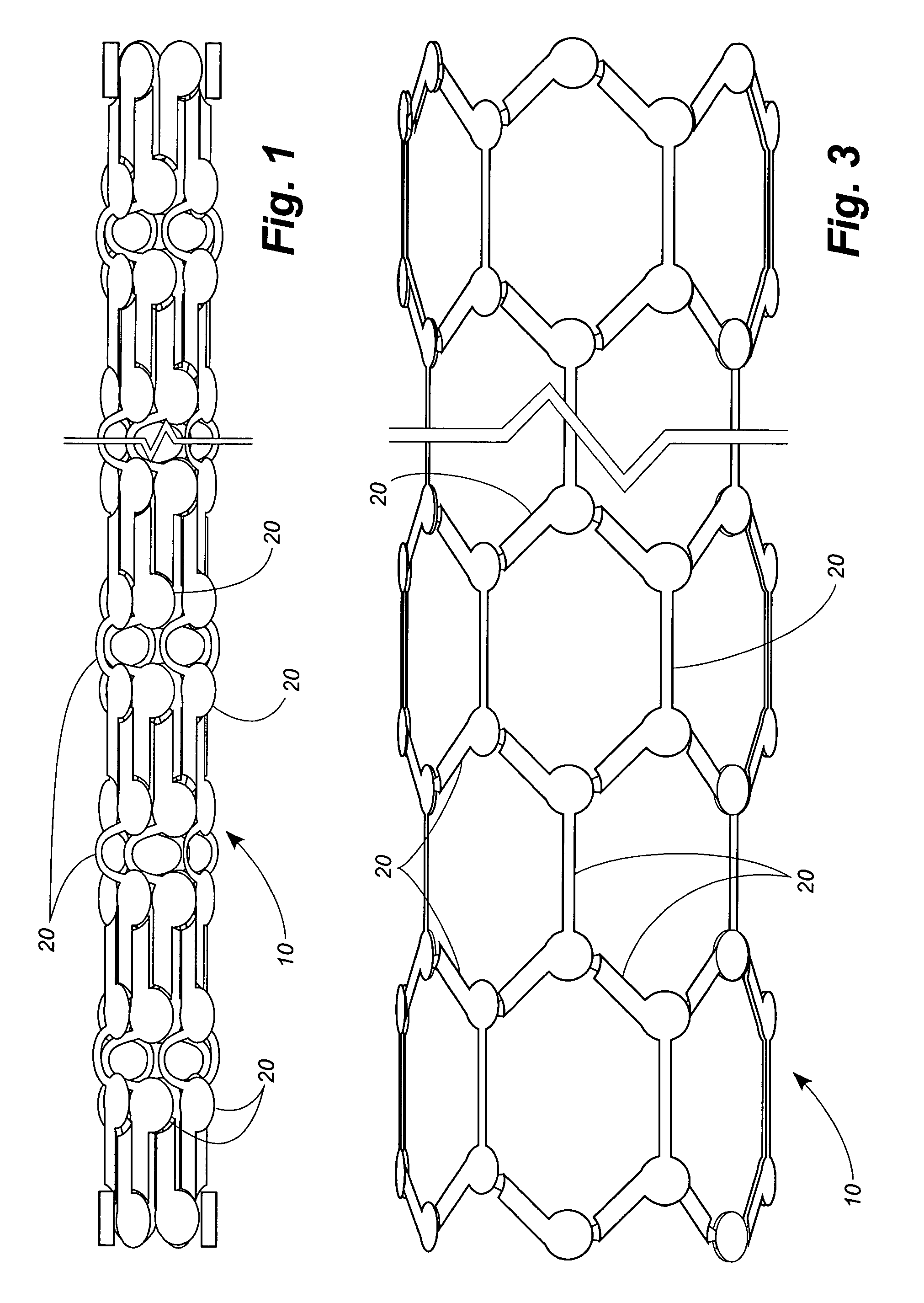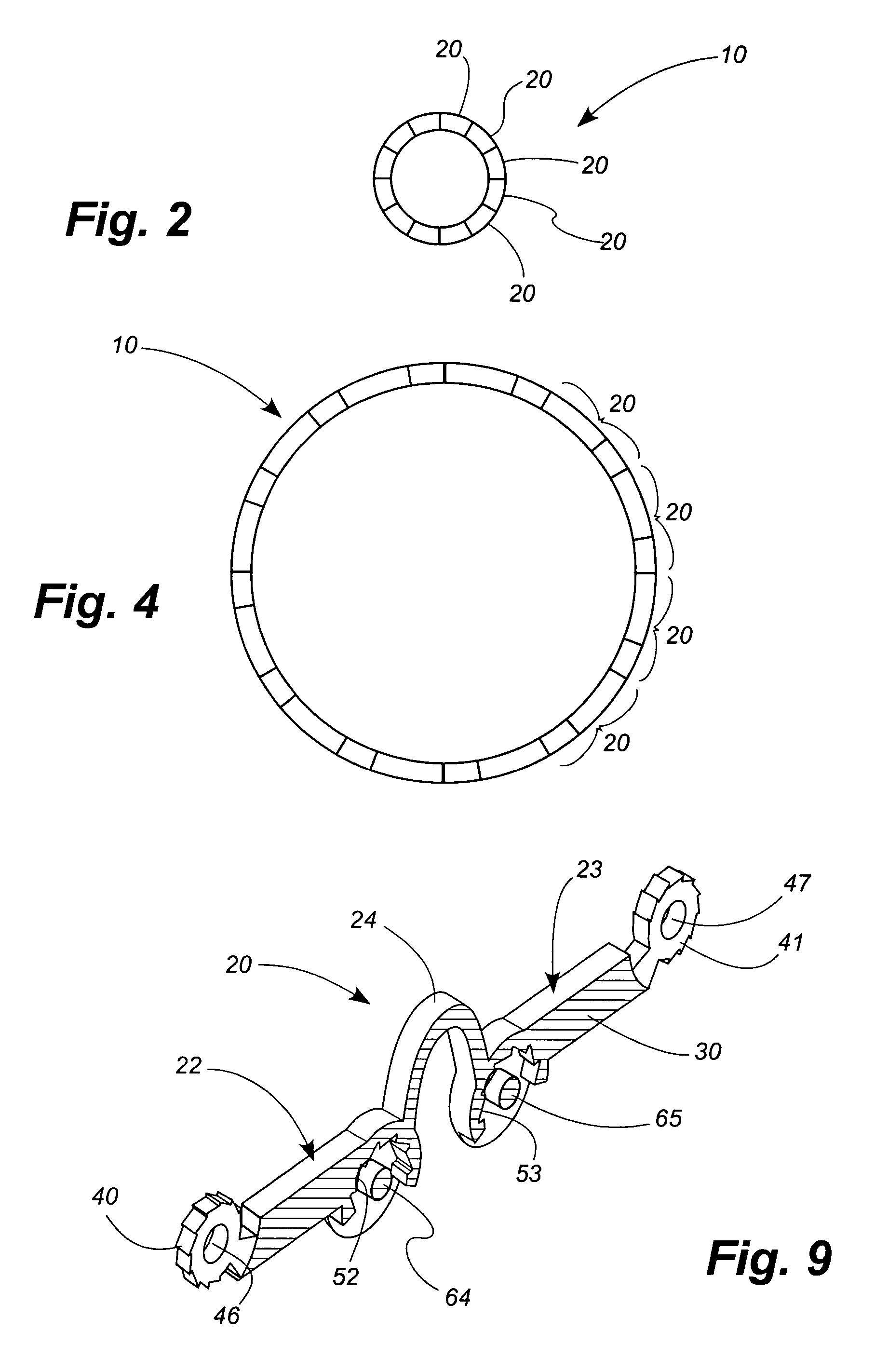Stent with micro-latching hinge joints
a hinge joint and stent technology, applied in the field of medical devices, can solve the problems of minimal elastic recovery, limited material selection, and typical elastic recoil of some components
- Summary
- Abstract
- Description
- Claims
- Application Information
AI Technical Summary
Benefits of technology
Problems solved by technology
Method used
Image
Examples
Embodiment Construction
[0081]Referring now to the drawings, in which like numerals indicate like elements throughout the several views, FIGS. 1–4 show a stent 10 according to a disclosed embodiment of the present invention. The stent 10 is comprised of a plurality of links 20. FIGS. 1 and 2 show the stent 10 in its unexpanded configuration, in which the stent has a length of approximately 35 mm and a diameter of approximately 2 mm. FIGS. 3 and 4 show the stent 10 in an expanded configuration, in which the stent has a length of approximately 35 mm and a diameter of approximately 7 mm. Thus the diameter of the stent 10 expands to approximately three-and-a-half times its unexpanded diameter, while the length of the stent remains virtually unchanged.
[0082]It will be understood that the dimensions of the stent 10 are disclosed only by way of example, and that the stent can be manufactured of any size suitable for the body lumen into which the stent is to be installed. As will be apparent, the dimensions of the...
PUM
 Login to View More
Login to View More Abstract
Description
Claims
Application Information
 Login to View More
Login to View More - R&D
- Intellectual Property
- Life Sciences
- Materials
- Tech Scout
- Unparalleled Data Quality
- Higher Quality Content
- 60% Fewer Hallucinations
Browse by: Latest US Patents, China's latest patents, Technical Efficacy Thesaurus, Application Domain, Technology Topic, Popular Technical Reports.
© 2025 PatSnap. All rights reserved.Legal|Privacy policy|Modern Slavery Act Transparency Statement|Sitemap|About US| Contact US: help@patsnap.com



